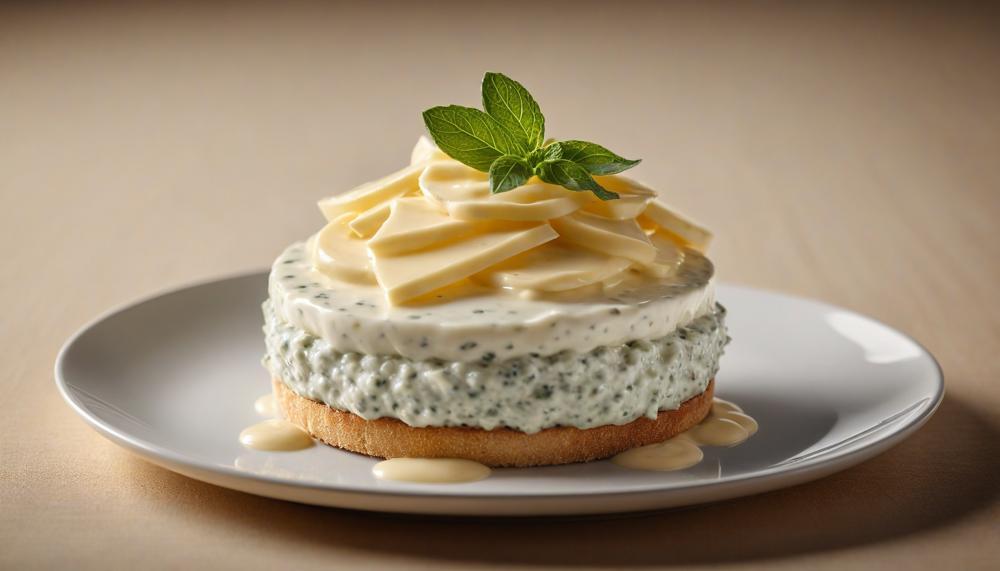Yes, Tartar Sauce Does Go Bad
Wondering if that jar of tartar sauce in your fridge is still good? The answer is yes, tartar sauce can indeed go bad. Here’s why and what you need to know to keep your condiments safe and tasty.
Tartar sauce is a delightful blend of mayonnaise, pickles or relish, lemon juice, mustard, and seasonings. While these ingredients make for a tasty addition to your fish dishes, they also mean the sauce can spoil over time. When exposed to air, the ingredients in tartar sauce begin to break down, leading to spoilage.
Key Points to Remember:
- Spoilage Signs: Look for sour or rancid smells, changes in color or texture, or mold growth.
- Refrigeration: Once opened, tartar sauce typically lasts 1 to 2 months if kept tightly sealed in the refrigerator.
- Health Risks: Consuming expired tartar sauce can lead to food poisoning due to harmful bacteria.
- Freezing Caution: Freezing isn’t recommended as the mayonnaise base can separate, affecting quality.
- Shelf Life Variations: Homemade versions usually spoil faster than store-bought, which often contain preservatives. Always check expiration dates on commercial products.
Ensuring your tartar sauce stays fresh not only preserves its flavor but also protects you from potential health risks. So, next time you’re about to enjoy a fish fry, give that tartar sauce a quick check to make sure it’s still in prime condition.
Contents
Shelf Life Of Store-Bought Tartar Sauce
The typical shelf life of store-bought tartar sauce varies depending on whether it is opened or unopened and the storage conditions.
| Condition | Shelf Life | Storage Recommendations |
| Unopened | Up to 18 months | Store in a cool, dry place. Check the expiration date on the packaging. |
| Opened | 1 to 2 months | Keep refrigerated at all times. Store in the coldest part of the fridge with a tightly sealed lid. |
Signs That Tartar Sauce Has Gone Bad
- Color Change: If the tartar sauce changes from its original color, it’s a sign of spoilage.
- Unusual Odor: A sour or rancid smell indicates that the sauce is no longer safe to consume.
- Texture Changes: A separation of the sauce that doesn’t blend back together when stirred or an overall change in texture can mean it’s spoiled.
- Mold: Visible mold growth is a clear sign that the sauce should be discarded immediately.
Storage Tips
- Always store tartar sauce in an airtight container to prevent contamination and maintain freshness.
- Avoid freezing tartar sauce, as freezing can alter its taste and consistency.
- For homemade tartar sauce, use fresh ingredients and store in the refrigerator, consuming within a week for best quality.
Using these guidelines, you can enjoy your tartar sauce while ensuring it remains safe to eat. Always refer to the manufacturer’s expiration date and follow proper storage practices to extend its shelf life.
Signs Of Tartar Sauce Spoilage
Determining if tartar sauce has gone bad is crucial to ensuring it is safe to consume. Here are the common signs of spoilage:
- Discoloration: Tartar sauce should maintain its creamy white appearance. If it turns yellow or brown, it’s a clear indicator of spoilage.
- Appearance: Fresh tartar sauce has a smooth, creamy texture. Spoilage may cause it to separate or become watery, indicating it is no longer safe to eat.
- Smell: A significant change in odor is a red flag. If the tartar sauce smells sour or off, it’s best to discard it.
- Flavor: Taste is another critical indicator. If the tartar sauce tastes unpleasant, sour, or simply “off,” it has likely spoiled.
Proper Storage Of Store-Bought Tartar Sauce
Store-bought tartar sauce can stay fresh and safe to eat for a long time if stored properly. Here’s a detailed guide on how to store it to ensure its freshness and longevity:
| Storage Condition | Before Opening | After Opening |
| Temperature | Keep in a cool, dark place, away from direct sunlight. | Refrigerate immediately at or below 4°C (39°F). |
| Container | Ensure the original packaging is intact and unopened. | Store in the original container or transfer to an airtight container to maintain freshness. |
| Shelf Life | Approximately one year, but it can maintain quality beyond the date if stored properly. | Lasts up to six months if refrigerated and tightly sealed. |
| Signs of Spoilage | Not applicable before opening. | Look for changes in color, smell, or taste. Discard if any signs of spoilage are present. |
Key Tips:
- Unopened Storage: Store your unopened tartar sauce in a cool, dark place like a pantry. Avoid places with temperature fluctuations.
- After Opening: Once opened, it’s vital to refrigerate immediately. Ensure the lid is tightly sealed to prevent exposure to air and bacteria.
- Container Choice: If you transfer the sauce to another container, make sure it’s airtight. This helps in retaining the flavor and freshness.
- Regular Checks: Periodically check your tartar sauce for any signs of spoilage. If the sauce appears discolored, smells off, or tastes different, it’s best to discard it.
- Avoid Cross-Contamination: Always use a clean spoon to scoop out the sauce to prevent introducing contaminants.
By following these guidelines, you can ensure that your store-bought tartar sauce remains fresh and safe to use for a longer period.
Proper Storage Of Homemade Tartar Sauce
To keep homemade tartar sauce fresh and prevent spoilage, follow these detailed guidelines:
- Use a Clean, Airtight Container: Store your tartar sauce in a clean, airtight container to avoid contamination. This prevents bacteria from entering and spoiling the sauce.
- Refrigerate Consistently: Always store the sauce in the refrigerator, maintaining a temperature between 35°F-40°F (1.6°C-4.4°C). This cold environment slows bacterial growth, keeping your sauce fresh.
- Avoid Heat and Sunlight: Place the container away from heat sources and direct sunlight. Heat can cause the ingredients to break down and spoil faster.
- Add Preservatives Judiciously: You can add a bit of citric acid or vinegar to extend the shelf life. However, use these preservatives sparingly, as they can alter the sauce’s flavor.
- Freezing Option: Tartar sauce can be frozen for up to three months. Be aware that freezing may change its texture and consistency, so this method is best used for longer storage.
- Check for Spoilage: Always discard tartar sauce that shows signs of spoilage, such as off smells, discoloration, or mold. This is crucial to avoid any health risks.
Shelf Life Of Unopened Tartar Sauce
Unopened tartar sauce typically has a shelf life of 12 to 18 months when stored correctly in a cool, dry area. The date printed on the bottle serves as a quality guideline rather than a strict safety measure.
As long as the packaging remains undamaged and the sauce is stored properly, it can still be safe to consume after this date.
Consumers can determine if tartar sauce has gone bad by looking for several key signs:
| Indicator | Description | Action |
| Odor | If the sauce emits an off or sour smell, it is likely spoiled. | Discard |
| Appearance | Look for any changes in color or consistency, and especially for mold growth. | Discard |
| Flavor | If the taste is off or unusual, do not consume. | Discard |
Shelf Life Of Opened Tartar Sauce
Opened tartar sauce can be safely stored in the refrigerator for about 6 months. To ensure its longevity and safety, always keep the bottle tightly covered. The expiration date on the bottle is more about peak quality rather than safety. If there are no signs of spoilage such as off odors, unusual flavors, changes in appearance, or mold, it’s generally safe to consume even after this date.
Storage Tips:

- Refrigeration: Keep the opened bottle in the fridge at all times.
- Tightly Sealed: Ensure the lid is securely closed to prevent contamination and maintain freshness.
- Check for Spoilage: Regularly check for any changes in smell, taste, or appearance to determine if the sauce is still good.
Signs of Spoilage:
| Indicator | Description | Action |
| Off Odor | Sour or strange smell | Discard the sauce |
| Unusual Flavor | Bitter or off taste | Do not consume |
| Appearance Changes | Color shifts, separation | Check for further signs |
| Mold | Visible mold growth | Throw away immediately |
Conclusion
Ensuring the freshness and safety of your tartar sauce is more important than you might think.
This beloved condiment, with its creamy blend of mayonnaise, pickles, lemon juice, mustard, and seasonings, can spoil over time, posing potential health risks.
Recognize Spoilage Signs
Keep an eye out for telltale signs like sour or rancid smells, changes in color, texture, or the presence of mold. If your tartar sauce exhibits any of these, it’s best to discard it.
Storage Tips
Proper storage is key to extending the shelf life of your tartar sauce. For store-bought varieties, an unopened jar can last up to 18 months when stored in a cool, dry place. Once opened, ensure it remains refrigerated and tightly sealed, which keeps it good for 1 to 2 months.
Homemade versions, lacking preservatives, should be consumed within a week.
Health Implications
Consuming spoiled tartar sauce can lead to food poisoning due to harmful bacteria.
Therefore, always check the expiration dates and observe storage guidelines to maintain its safety and flavor.
Freezing Caution
Freezing tartar sauce is not advisable as it can cause the mayonnaise base to separate, affecting both texture and taste.




